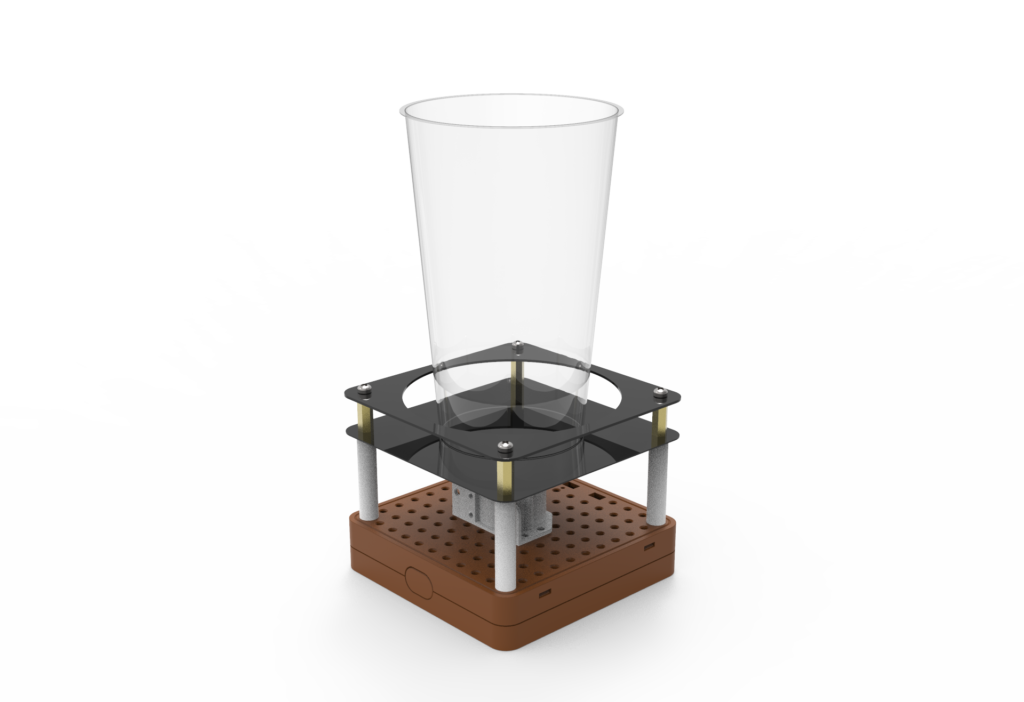Coin Funnel
What is the source of power for the Vortx Toy?

You don’t have to plug it in.
There are no batteries.
So where does it get its power?
The initial power is supplied by you when you lift the coins into the air. When you let go of them, gravity takes over. They slide down the ramp and shoot onto the funnel surface at a precise speed and angle. If they go too fast, they will run into the rim of the cone. If they go too slow, they will dive toward the center hole. It is the height and angle of the ramps which provides the correct angle and speed.
Accelerated Gravitational Motion:
As an object falls under the influence of gravity its speed changes in a very regular way. During every second of fall it gains a speed of 9.8 meters (32 feet) per second. Its acceleration is therefore 9.8 meters per second every second (or 9.8 meters per second per second… or 9.8 meters per second squared.)
Of course, this assumes there is no wind resistance which is never the case. All falling objects have wind resistance. When the shape and friction of the object equals the 9.8 m/sec^2 gravitational pull, the object is said to have reached maximum or “terminal velocity”. For instance, sky divers can speed up or slow down depending on their body, arm, and leg position.
Gravity alone will not cause motion. By itself, it only holds objects tight against the earth. There must be some other source of energy that first moves objects away from the earth. Then, and only then, will gravity cause the object to move by drawing it back to the earth. You supply that energy when you lift the coin, and then drop it.
The ramps launch the coins at exactly the correct angle and speed. But you can have a lot of fun with the Vortx® by removing the ramps and trying to throw coins onto the funnel surface at different angles and speeds. It can be difficult, but with practice, you can become very good at it.

